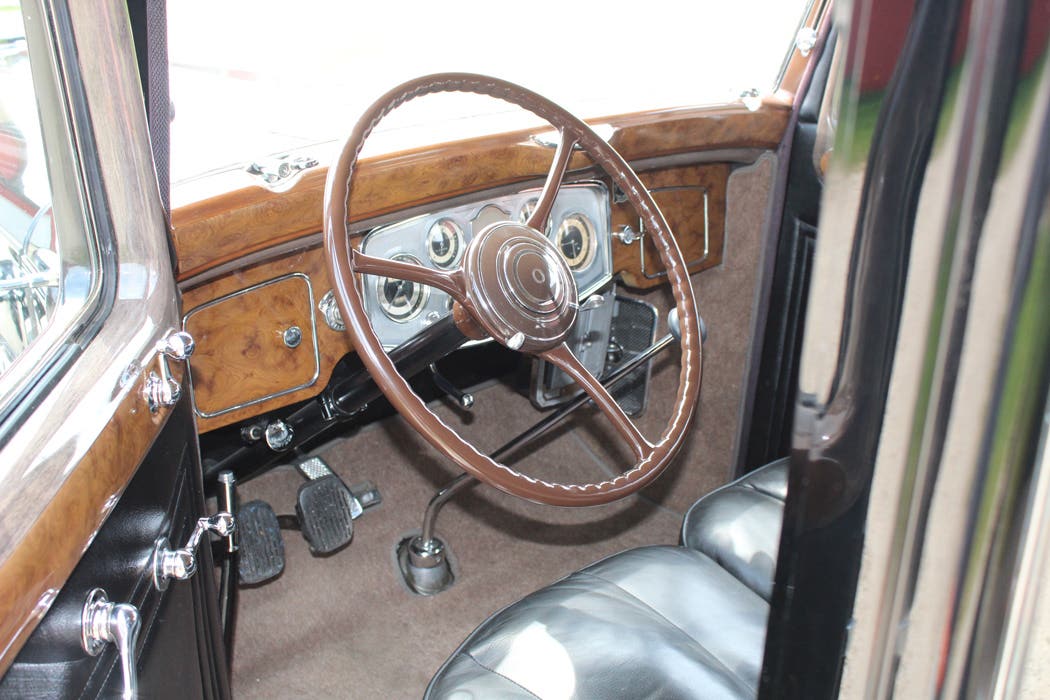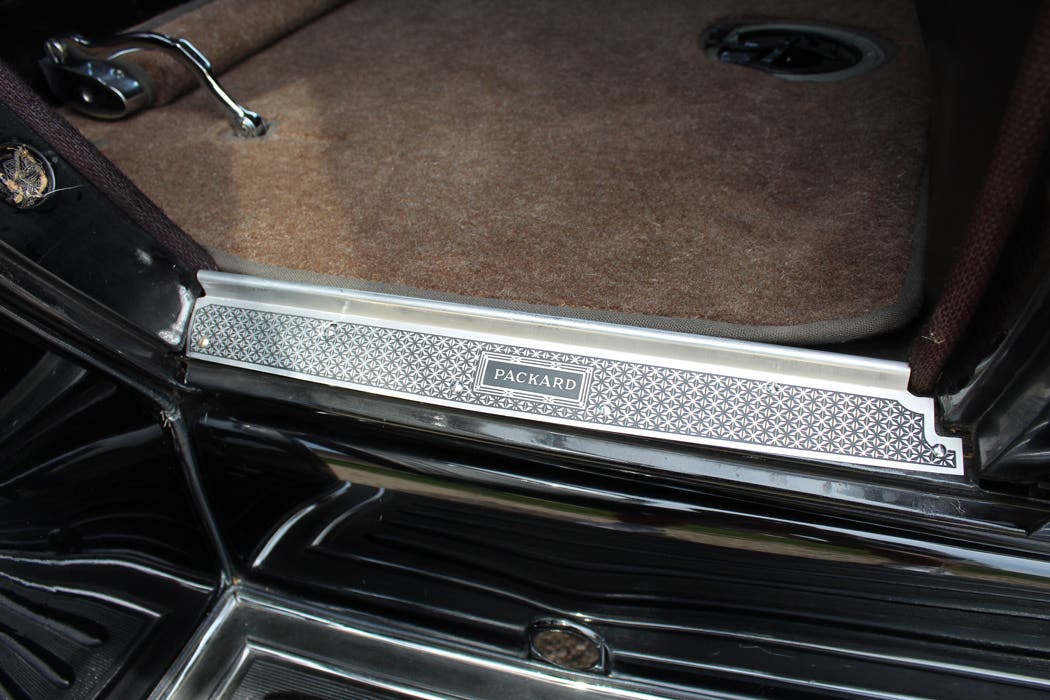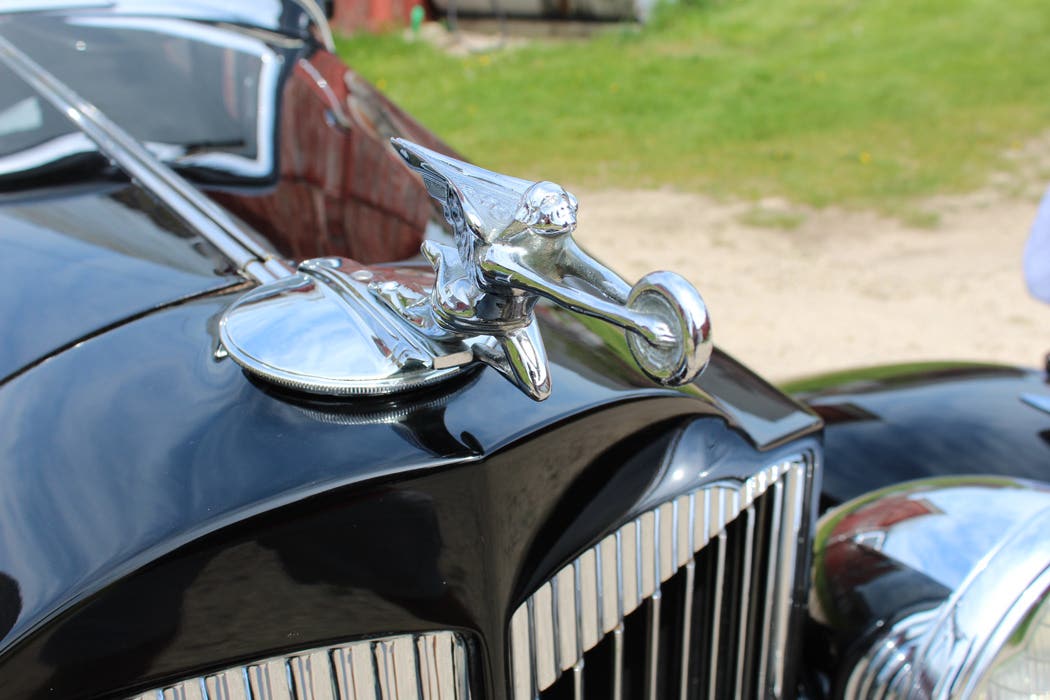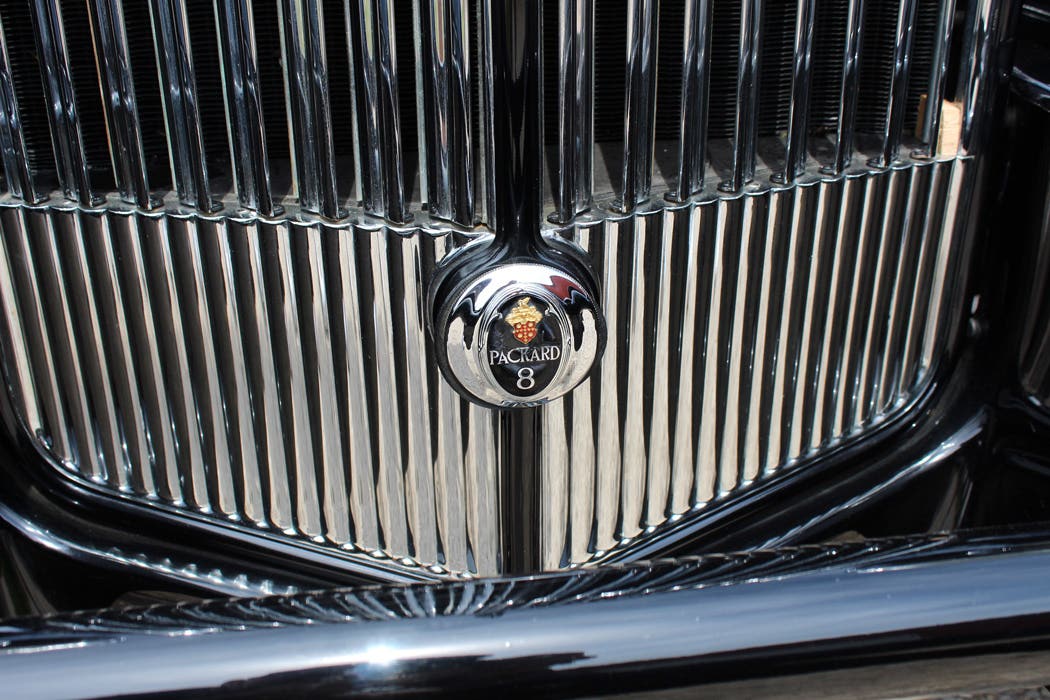Car of the Week: 1934 Packard Model 1100
It may have been Packard’s cheapest car, but the 1934 Model 1100 still dazzles.
Paul Kammann’s second choice turned out to be a pretty darn good first Packard.
Kammann owns three pre-war Packards these days — along with a few other wonderful machines — and it’s his 1934 Model 1100 that really kicked off his love affair with the brand. And it was a car that he wound up with almost on accident.
Back in 2009, the Cleveland, Wis., resident road tripped to Ohio to check out another Packard. He thought he had a deal, and then things took an unexpected turn.
“Well, I thought I wanted a ’32’ club sedan, a 902 model. I thought I liked that style and I saw one on the internet for sale and it was owned by a g54uy that had it on display at the Citizen’s Motor Car Co. in Dayton, Ohio, that Packard Museum down there,” Kammann recalls. “That was the style I thought I’d like and so I went there to check it out.”
The arrangement was set up by a broker from Indianapolis, who met Kammann at the museum. A test drive of the car went well and the deal seemed imminent.
“We were working on the paperwork to buy it. Well, before we wrote the checks, Bob Signom came in, and he runs the museum, and he comes in and says, ‘Boy, I hope you didn’t buy that ’32.’ And the broker says, ‘Yeah, that car is gone.’ ‘Oh,’ he says, ‘I don’t want to lose that car.’ The car had been in that “Benjamin Button” movie and his son was somehow involved in the movie, so he wanted to keep that car."
“He asked me if I would consider buying a different car… I asked him ‘Well, what car did you want to sell?” And he started talking about the ’34. The car had been donated to the museum by John Bauer; he was on the board of the museum. He had restored the car. He had bought the car back in ’96 and then it took him 4 or 5 years to restore it. He went in and replaced the wood in the frame and the body and did a comprehensive restoration, and he wound up donating it to the museum. He just wanted to do something for the museum, so he donated two cars, actually. The one I bought, and another ’34 that was a parts car. ”
Kammann was even more impressed with the ’34 sedan than he was with the ’32.
“We tested it out everything was fine. It actually had new paint on it, where on the other one the paint was original and all cracking. And the ’34 is really a more desirable body than the ’32.”
When Signom told him “I’ll give you a price you can’t walk away from,” Kammann was sold and soon headed back to Wisconsin with the gorgeous black sedan.
The ’34 sedan was eventually joined in Kammann’s garage by a 1930 Model 733 and a 1937 Super Eight convertible. All three are lovely cars, but the ’34 will always have the honor of being “the first”.
“I really like the looks of it. It’s got blackwalls on it, but it’s got the chrome trim rings and wire wheels on it and it’s black and it’s got just enough chrome here and there that really makes it stand out,” he notes. “
Interestingly, the data plate on the car indicates it was originally delivered in July of 1934 to the Packard Motor Co. of New York City. Kammann said the data plate is probably a replacement, however, and believes the car was actually sold new in Geddysburg, Pa. He isn’t sure who had the car during it’s first 50-plus years, but it’s been well-traveled since the 1980s.
“It was an East Coast car, and the first record I have of it, it showed up in ’86 in West Virginia. Then it was sold to a fella in Knoxville, Tenn., in ’91, then in ’92 it was sold to a guy in North Carolina, and then in in ’95 it was sold to Dr. Bauer, and he’s the guy that restored it.”
During its time at the museum in Dayton, the big sedan was apparently rented out periodically for weddings and other formal events. As far as Kammann was concerned, that was another selling point.
“You know those museum cars, they can go to pieces because they never get driven, but fortunately this car got driven on occasion. I thought that was a real plus,” he says.
1934 Model 1100: The ‘budget’ Packard
In Packard nomenclature, Kamman’s five-passenger sedan is a Series 1100 Model 703. That makes it somewhat unique on a couple of fronts.
First, as impressive as the car is, it was considered Packard’s “bargain” entry at the time. With a base price of $2,350, it was the lowest-priced Packard offered by more than $200. “The model 1100 was their basement starting car. It was the cheapest one and stripped down,” Kammann laughs.
“What really gets people is that it’s the smallest car that Packard made. It’s the small wheelbase, it’s got the smallest motor, but yet it’s still a luxury car.”
1934 was the year of Packard’s Eleventh Series, and the Model 703 was the lone car to use a chassis brought back from 1932 that measured 129.5 inches. Kammann’s car is one of just 5,120 Packard Eights built for the model year, which had a total of production of run of only 8,000 cars.
The Packard Eight was comprised of three series for ’34. The 703 five-passenger sedan was sort of a stand-alone model. The 127.5-inch chassis was dropped and a new 131.5-inch chassis was added for two seven-passenger models. These were called the 1102s. In the middle on a 136.25-inch wheelbase were the Series 1101 Packards, which included 10 different body configurations. The Super Eight models used 135-, 147- and 142-inch chassis and were called the Series 1103, 1104 and 1105. Further up the ladder were three series of V-12 machines on the same three chassis: Series 1106, 1107 and 1108.
Packard made several detail changes for the model year, but it wasn’t a year for a major restyling. An oil temperature regulator was added and the gas tank filler was built into the left rear tail light assembly. The new bumpers were slotted, creating a double-bar look. The car was re-engineered for radio, requiring a larger, heavy-duty generator with a vacuum tube radio being an option. The pivot window treatment of the previous years gave way to an angle vent wing.
All the Packard Eights used the same 120-hp, 319-cid L-head inline engine and synchronized three-speed gearbox. The options list that year included: dual sidemount; sidemount cover(s); radio ($79.50); cigar lighter; chrome plate wheel covers ($100 each); Deluxe radiator ornament ($10); Pelican radiator ornament ($20); disc wheels ($25); wood wheels ($78); chrome wire wheels ($192); six chrome disc wheels ($85); chrome wheel trimming ($12); and side mirrors ($16).
The 1934 model year was the last time all the Packards were exclusively large “Senior” cars. The ‘34s were considered by many to be among the high points of design and style during Packard’s evolution, with their new slotted bumpers, skirted fenders and V-shaped radiator grilles. A year later, Packard made a significant change in course when it introduced the Depression-fighting “Junior” models.
Permanent Packard Fan
Packard’s famous sales slogan was “Ask the man who owns one,” and Kammann certainly would have been a good pitchman in that regard. He has genuine appreciation and affection for his classic ’34 sedan, and after 13 years of custody he’s happier than ever with his purchase.
Old car ownership never comes without a few challenges now and then, and Kammann has had a few wrinkles to iron out with the ’34. The first big obstacle — a horn — still has him shaking his head.
"The biggest headache on it is that there are outside horns on those cars, and one of those horns was missing. It turns out the ’34 horns were only used in ’34, and of course there is a left-handed and a right-handed besides,” he says. “So I looked for a year trying to find a horn… I ended up getting hooked up with a guy named Cecil Nuxel, out in the state of Washington. He was in his 90s back then, but he was a horn guy and I told him what I was looking for and he says, ‘Oh I just found a set that was in a barn that are just perfect. They are just like new.’ Well, he wouldn’t sell just one, so I bought both of them. I knew how hard they were to find. I had been looking for a year! So I had to bite the bullet and buy both of them.”
Kammann said he also rebuilt the car’s generator and eventually needs to fix the speedometer. He had some pinstriping done across the car’s beltline and along the fender edges. Beyond that, he blames himself for the only other work the Packard has required.
“I did make a mistake when I first bought it, I thought the best thing to use for fuel was aviation gas,” he says. “It’s expensive, but I started buying aviation gas at the airport. But son of a gun, it wasn’t too long before I hung up a valve on it. Turns out that aviation gas is a dry fuel. There is just no lubrication in the stuff, and so the valve stem got seized in the block, so I learned my lesson and now I just use high-test gas to avoid the alcohol.”
For guys like Kammann, it’s not hard to understand why buyers back in the 1930s would pony up big dollars for a car like the ’34 Packard 1100. It offered such magnificent good looks and advanced technology that it had very little competition in the luxury car market.
“One thing that I really like is this car has got the spare on the back, it doesn’t have sidemounts. The first two Packards I got were both set up that way and I really like that because you get that nice sweeping line of the fenders carries into the running boards and makes a much longer line on the car,” he says. “It was [very advanced]. In back you’ve got a foot rest that is adjustable, so it flips over and if you are long-legged you’ve got an extra couple inches that you can brace yourself, or you can flip it the other for shorter legs… It’s got Bijur oiling system on it, and that that’s vacuum-operated on the ‘34s. It’s got the gas gauge, that if you push a button under the dash it shows you how much oil is in the motor. And, of course, it’s got your oil pressure gauge and ammeter and the normal gauges that you’ve had. It’s got adjustable shock absorbers connected to the dash, and the fuel pump has got the vacuum pump on it and it’s got vacuum assist on the brakes and vacuum on the wipers and lubrication system. And the ‘34s had dual coils on the ignition system to make sure you’ve got plenty of spark."
"And last but not least, “there are cigar lighters in back in the armrests.”
Kammann and his wife Melanie are retired and live in rural Wisconsin with plenty of open roads and not many stop signs. He says that’s a good thing when it’s time to take the ’34 sedan out for some exercise.
“It’s not the longest-wheelbase Packard, but it’s still long, and it’s got the 17-inch tires on it, so it’s got big tires,” he says. “No power steering or anything like that, and the brakes are mechanical brakes, and it’s a heavy car, so you have to plan ahead. I hate driving it in cities when I’m coming up on stoplights. Because if that light changes on me quickly, I can be in trouble trying to stop before I hit something.”
Short of running into something, Kammann doesn’t expect to have any problems with the black sedan. He got most of the bugs out of it years ago and he’s thoroughly enjoying retirement with his three semi-retired Packards.
“I haven’t spent a whole lot of money on the car, and he drives as good as when I bought it,” he says. “I really have no plans to do anything with it now. Other than enjoy it.”





SHOW US YOUR WHEELS!
If you’ve got an old car you love, we want to hear about it. Email us at oldcars@aimmedia.com
If you like stories like these and other classic car features, check out Old Cars magazine. CLICK HERE to subscribe.
Have you ever wondered what your classic ride is worth? Old Cars has you covered with the Old Cars Report Price Guide. We are your source for unbiased and real-world pricing. Subscribe today and find out what your car is really worth! CLICK HERE to subscribe.








